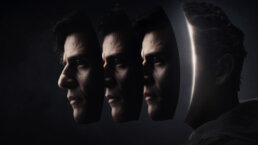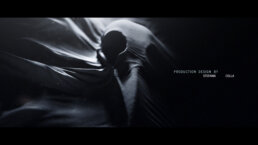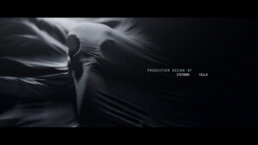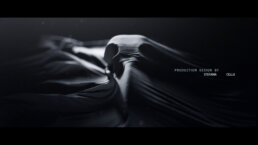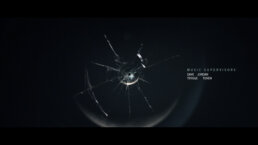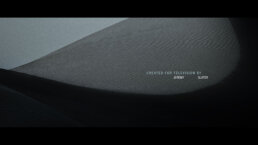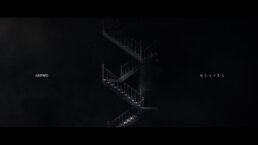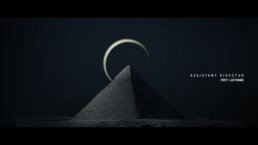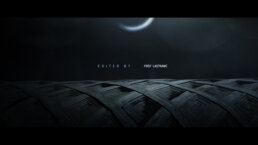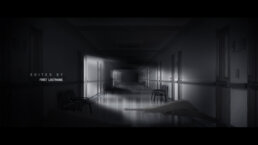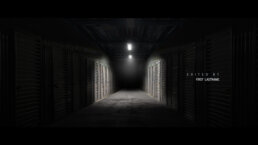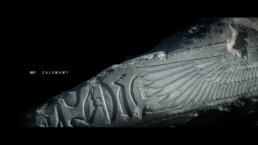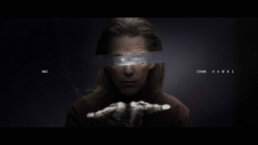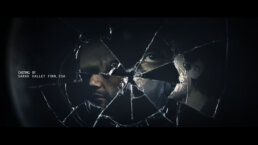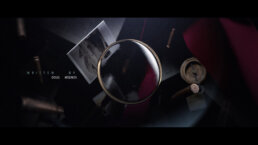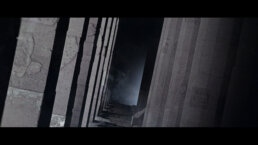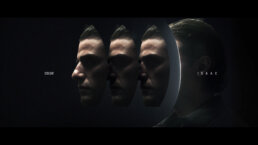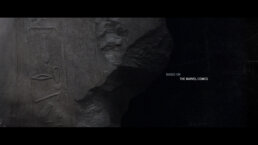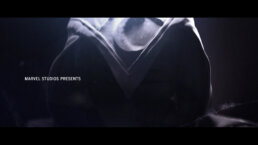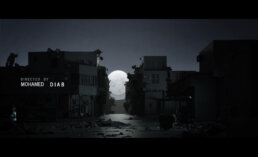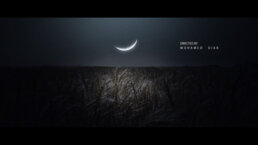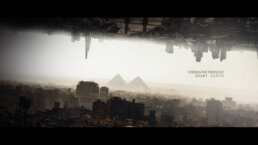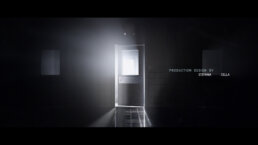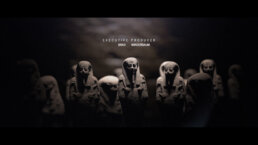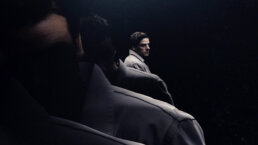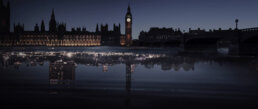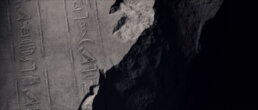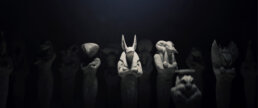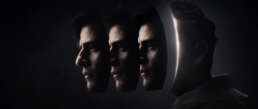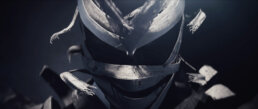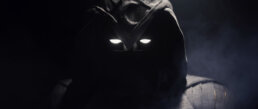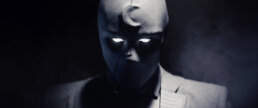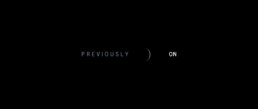01
INTRODUCTION
In preparation for their newest Disney+ series, the team at Marvel Studios asked our team at Perception to design an incredibly unique title sequence to match an equally unique hero - Moon Knight. Moon Knight follows the story of Steven Grant (Oscar Isaac), a gentle man who begins to realize that he’s not the only alter existing inside of his body. Full of mystery, action, and fascinating mythology, our team was tasked to design the main on end title sequence for this epic adventure.
Moon Knight End Title Sequence - Episode 6
Quickly fascinated by the series, the themes and tones, and the possibilities of potential sequences, our team got to work crafting various frames and look developments of how this sequence could appear.
Initial look development for Khonshu's cloth frames
02
RESEARCH
One of the most notable aspects of Moon Knight is its heavy ties to Egyptian mythology. In order to better connect with these themes from the series, our team visited the Metropolitan Museum of Art in New York City. The Met is home to vast, in-depth displays of Egyptian artifacts. We perused and studied the various Egyptian exhibits and displays to help craft something as authentic as possible to both the series and Egyptian mythology.
03
PICKING A DIRECTION
After building initial ideas for the sequence, we decided to go with a sequence that focused on the tone of the series, which was something dark and mysterious, yet sophisticated. Our goal was to create something that would be “elegantly unsettling”. With this in mind, we also wanted to dive deeper into the lives of Steven Grant and Marc Spector, their differences, but also their connection.
Conceptual development of the main on end title sequence
Steven Grant lives a quiet life in London, while Marc Spector lives an adventurous life serving as the avatar of the Egyptian god, Khonshu. These concepts provided a strong basis to crafting this sequence. We worked closely with Moon Knight Executive Producer, Grant Curtis, to help build the sequence and refine our designs.
Moon Knight End Title Sequence - Episode 1
04
THE DEVELOPMENT PROCESS
In the development process, we began pulling themes from the show that we wanted to showcase in the sequence. These themes would be both nods to the events from the show and a deeper exploration of the characters.
Some of the major aspects we explored were the ideas of multiples and reflections. Reflections serve a huge role in Moon Knight. It’s the main way that Marc and Steven communicate with each other and get to learn more about one another.
In addition to reflections, we also picked out elements that were crucial to the story and to both Steven and Marc. We wanted to tie Steven and Marc together while also showing their differences and oppositions. One frame that utilizes all of these aspects is the skyline shot. In the skyline, we see famous buildings in London, but the reflection of the water shows Cairo, Egypt instead. This shot shows the two main settings of the story and symbolizes the differences in Steven and Marc’s roots while also tying them together in the reflection. London being the prominent skyline while Egypt is in the reflection also is a nod towards Steven being in control of the body that episode.
05
THE IMPORTANCE OF TONE
Moon Knight is a very unique series, and because of that, its tone is vastly different than that of any Marvel Studios series we have seen on Disney+ before. Therefore, this sequence is also vastly different than any other title sequence our team has designed in the past. The tone of Moon Knight is reminiscent of psychological thrillers, and we really aimed to lean into that for this sequence.
Moon Knight End Title Sequence - Episode 2
To create something “elegantly unsettling” that was based in both sophistication and psychological thriller themes, we explored how scenery could morph and blend together in a way that was visually potent and beautiful, but also dark and eerie. The constant morphing and blending not only represents Steven and Marc’s dynamic, but also how both the characters and the audience can’t grasp onto any one thing. Everything is constantly shifting and moving, and everything is a mystery, and that unsettling fact helped bring out the darker elements from the show in this sequence.
Moon Knight End Title Sequence - Episode 3
06
TECHNICAL DETAILS
To create such a detailed and unique sequence, we utilized various programs and software to bring each frame to life. After mocking up each frame in Adobe Photoshop, we began building scenes in 3D using Cinema 4D, using 3D geometry and projection mapping for several frames and 3D modeling and texturing for the moon, smoke, and particle simulations.
One particularly interesting element of this sequence was creating the cloth of Moon Knight’s costume. We received a suit model from Marvel Studios to help us with this particular element. We wanted the cloth to be as detailed as possible in this sequence, so even though it was all created digitally, it would feel as though this cloth was real and tangible.
After receiving the suit model, we began rebuilding the suit piece by piece, draping the strips of cloth on the suit’s sleeve to simulate how the cloth would move and rest on Moon Knight’s body. After studying its movements, we used Houdini’s toolset Vellum to create the ripping and movement of the costume’s cloth in the sequence.
07
EASTER EGGS
Like all of our title sequences that we design, we scattered several Easter eggs and nods towards important events in the series throughout this sequence.
In one shot of the sequence, we see a large boulder covered in hieroglyphics. These hieroglyphics actually match the hieroglyphics seen on the thigh of Moon Knight’s costume, which represent the oath of Khonshu. Despite the boulder being zoomed in on and weathered from years in the desert, pieces of Khonshu’s oath remains engraved in the stone, “rise and live again as my fist of vengeance, my Moon Knight”.
Shortly after this boulder shot, we see a collection of the Egyptian gods’ ushabtis. Upon first viewing, the audience may recognize these ushabtis as something that could be found in Steven’s gift shop. However, after episode 3, the audience understands that these ushabtis were foreshadowing to Khonshu’s imprisonment inside of an ushabti – and perhaps the imprisonment of other Egyptian gods as well.
Throughout the sequence, the number three plays a large role. In particular, in Oscar Isaac’s credit frame, Isaac’s face can be seen separating into 3 identical copies. This indicates that Isaac is playing Steven, Marc, and maybe even someone else, hinting that there could be a third alter appearing at some point in the series.
08
A SHIFTING SEQUENCE
When designing a title sequence for an episodic series, our team loves to adjust the sequence as the show progresses. Not only is it a way to include new elements that reflect the events of the show, but it also keeps audiences on the edge of their seats looking for something new every episode. Our title sequence for Moon Knight was no exception.
In one shot of the sequence, we see a large boulder covered in hieroglyphics. These hieroglyphics actually match the hieroglyphics seen on the thigh of Moon Knight’s costume, which represent the oath of Khonshu. Despite the boulder being zoomed in on and weathered from years in the desert, pieces of Khonshu’s oath remains engraved in the stone, “rise and live again as my fist of vengeance, my Moon Knight”.
Moon Knight End Title Sequence - Episode 4
In episode 1, a shot of Moon Knight opening his eyes precedes the end title card. However, after his introduction in episode 2, Mr. Knight is added to this final shot of the sequence. This shot of Moon Knight and Mr. Knight carry on through the final episode.
Along with the addition of Mr. Knight, the skyline shot of London with Egypt being reflected in the water shifts as the series progresses. The skyline changes depending on where the story is currently taking place that episode. As the story becomes more based in Cairo, the skyline begins to show Egyptian architecture rather than buildings from London.
One of the most prominent changes of the sequence is the phase of the moon. While the moon starts as a waxing crescent in the first episode and becomes a full moon by episode 6, its phase progression is not linear. Certain episodes include a moon that is closer to a full moon than others. The phase of the moon reflects the rise and fall of the story, as well as the connection between Marc and Steven, and the emotional weight of their journey.
Moon Knight End Title Sequence - Episode 5
09
MAIN TITLE & PREVIOUSLY ON
Our team also designed the main title card and the “previously on” title card that play in each episode.
We developed and animated the main title with movements that mimic the way shadows move over the moon.
10
CONCLUSION
It was an honor to collaborate with the team at Marvel Studios on Moon Knight! This series introduces such an intriguing story and character, and it was incredible to be a part of it. You can stream Moon Knight on Disney+ now!
